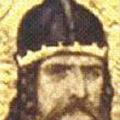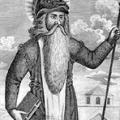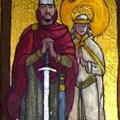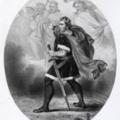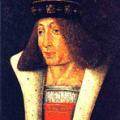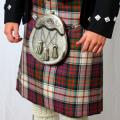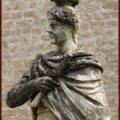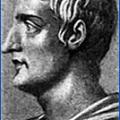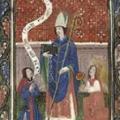Categories
Most Liked
Posted on July 17, 2013
by Amanda Moffet
by Amanda Moffet
Posted on May 12, 2013
by Chas Mac Donald
by Chas Mac Donald
Posted on August 29, 2013
by Amanda Moffet
by Amanda Moffet
Posted on February 7, 2013 by Donald | 7 views | comments
Cináed mac Ailpín was king of the Picts and, according to national myth, first king of Scots. Cináed's undisputed legacy was to produce a dynasty of rulers who claimed descent from him. If he cannot be regarded as the father of Scotland, he was the founder of the dynasty which ruled that country f...
Posted on February 7, 2013 by Donald | 1 views | comments
William I "the Lion" (known in Gaelic as Uilliam Garm or William the Rough), reigned as King of Scots from 1165 to 1214. His reign was the second longest in Scottish history before the Act of Union with England in 1707. He became King following his brother Malcolm IV's death on 9 December 1165 and...
Posted on February 7, 2013 by Donald | 1 views | comments
Máel Coluim mac Donnchada (Malcolm III) was King of Scots. He was the eldest son of Donnchad mac Crínáin. While often known as Malcolm Canmore, the earliest epithet applied to him is Long-Neck. It appears that the real Malcolm Canmore was this Máel Coluim's great-grandson Malcolm IV.
Máel Coluim'...
Posted on February 7, 2013 by Donald | 2 views | comments
Mac Bethad mac Findláich, known in English as Macbeth was King of Scots (or of Alba) from 1040 until his death. He is best known as the subject of William Shakespeare's tragedy Macbeth and the many works it has inspired, although the play itself is of limited historical accuracy.
Posted on February 7, 2013 by Donald | 6 views | comments
James II, the son of James I of Scotland and of Joan Beaufort had an elder twin, Alexander Stewart, Duke of Rothesay, who lived long enough to receive a knighthood, but died in infancy. James II gained the nickname "Fiery face" because of a conspicuous vermilion birthmark on his face. James had si...
Posted on March 2, 2013 by Lynn McAlister | 21 views | comments
On the 8th of July 1587, the Scottish Parliament meeting in Edinburgh enacted a General Band (or Bond) For the quieting and keping in obedience of the disorderit subjectis, inhabitantis of the bordouris, hielandis and ilis. This legislation was the first attempt by James VI as an adult to bring thes...
Posted on July 15, 2013 by Amanda Moffet | 23 views | 2 comments
This article - or more 3 articles was kindly sent to us by William Shaw Of-Easter Lair. It's three diary pieces; the first wrote from the point of view a tribal warrior during the time of the Roman incursion, the second from a young man living on the Tay circa 800 and finally the third from a Clan ...
Posted on September 17, 2019 by Darrell Paden Hancock | 15 views | comments
Notes on one of the Most Obscure clans in Scotland's History. Clan MacFadyen, or MacPhaiden, or Patton, etc...
In doing research recently for my Bachelor's thesis on Gaelic culture in Scotland and Ireland, and in turn doing some digging into family history, I decided to pursue my Patton roots and lo...
Posted on February 6, 2013 by Donald | 16 views | comments
Measuring for a Gents Kilt (and Older Boys)
Taking Your Measurements: For men it is important to have the correct "starting point". this is exactly 2 inches above the hip bone.
Gents Measurement Guide For Wearing A Kilt
WAIST (1)
From this starting point measure around the stomach, this is the wais...
Posted on February 6, 2013 by Donald | 4 views | comments
Julius Agricola was sent in the year AD77 to be governor of Britain for the Roman Empire. He pushed the Empire's reach northwards with advances to the valley crossing Scotland from the Clyde to the Forth in AD80. He enforced the front with a row of forts before continuing with campaigns up the east ...
Posted on February 6, 2013 by Donald | 3 views | comments
The Battle of Mons Graupius took place in 83 or 84. Julius Agricola, the Roman governor had sent his fleet ahead to panic the Caledonians, and, with light infantry reinforced with British auxiliaries, reached the site, which he found occupied by the enemy.
Even though the Romans were outnumbered in...
Posted on February 6, 2013 by Donald | 4 views | comments
When Bede’s Historia Ecclesiastica was written in 731, it named Ninian as the first Scottish Christian. The Romans left Britain with traces of their Christianity remaining.
Ninian, the son of a Scottish chief, was trained as a bishop by the Romans before founding a church at Whithorn in Galloway wh...
Featured Articles
Most Discussed
Posted on July 16, 2013
by Amanda Moffet
by Amanda Moffet
Posted on February 6, 2013
by Donald
by Donald
Posted on July 17, 2013
by Amanda Moffet
by Amanda Moffet


 View More
View More View Less
View Less